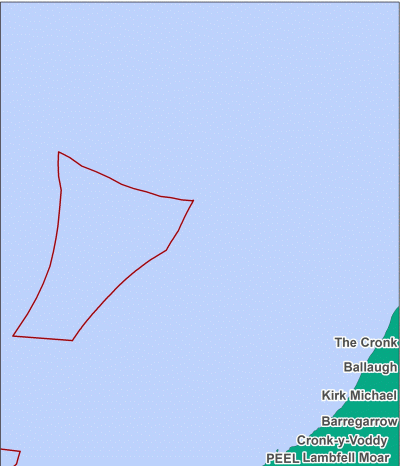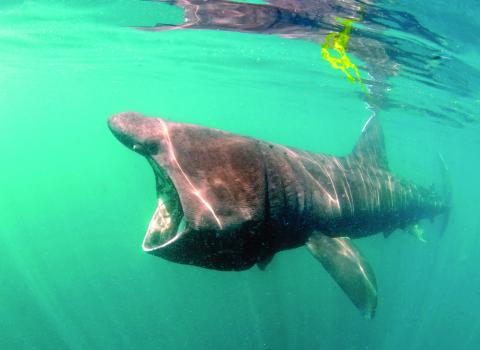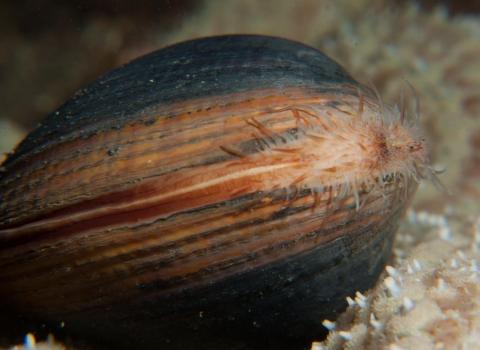South Rigg Marine Conservation Zone protects muddy sediments that are home to vulnerable species such as tube worms, slender sea pens, heart urchins, mud shrimp and the Dublin Bay prawn.
Located between the Isle of Man and Northern Ireland, South Rigg is extremely important due to the presence of the Irish Sea Mounds. These rocky outcrops on the sea floor provide a solid base for creatures to settle including anemones, brittlestars, sea firs and sea mats, and tube worms. Muddy habitats next to the mounds support huge diversity of life, from burrowing sea urchins and slender sea pens to mud shrimps and the commercially important Dublin Bay prawns.
A unique ocean current system establishes here in the summer making it a rich foraging area for basking sharks, sea birds and marine mammals and a hotspot for biodiversity.
The world's longest lived animals, ocean quahogs (a type of clam), also live here. Live juveniles of the ocean quahog have been recorded here, making it only one of two known breeding population in the Irish Sea. Did you know ocean quahogs can live for over 500 years and are used in scientific studies on climate change? They are also an important food source for cod.
South Rigg contains the only known breeding population of ocean quahog clams in the Irish Sea.

Contains UKHO Law of the Sea data. Crown copyright and database right and contains Ordnance Survey Data Crown copyright and database 2012.

Nick Robertson-Brown
Show your love for mud
Unfortunately, intensive trawling for Dublin Bay prawns occurs in most muddy areas of the Irish Sea.
There is currently a lack of protection for muddy habitats in the Irish Sea. Therefore, it is critical that other sites such as Mud Hole are protected as soon as possible to safeguard valuable species and habitats.







